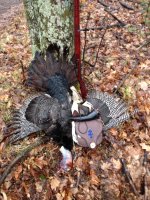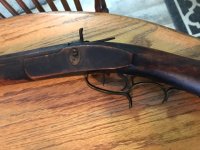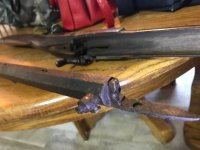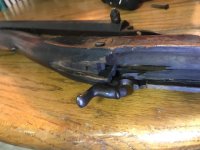mike.shoaff
Inactive
Hello,
I would like to know if anyone could help ID a gun I inherited.
I attached a couple pics. It is about .35 caliber and I did feel any rifling when cleaning the barrel. It is percussion gun and has no ID marks anywhere. I took off the barrel and looked underneath and all. There is engraving on the side plates that look like leaves sort of. I could supply pics of the engraving. It is a heavy octagonal barrel. It has 2 triggers that still function, to get the hammer to stay back you cock/pull the big rear trigger then the small front trigger fires. The small front trigger has an adjustment screw. It is a nice light trigger pull. It was in an old farm house in Indiana, probably my great grandfathers gun.
Any info or guesses would be great,
Thanks!!
a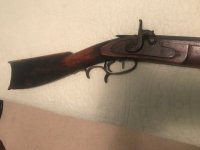
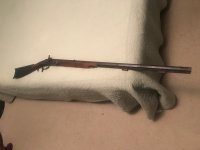
I would like to know if anyone could help ID a gun I inherited.
I attached a couple pics. It is about .35 caliber and I did feel any rifling when cleaning the barrel. It is percussion gun and has no ID marks anywhere. I took off the barrel and looked underneath and all. There is engraving on the side plates that look like leaves sort of. I could supply pics of the engraving. It is a heavy octagonal barrel. It has 2 triggers that still function, to get the hammer to stay back you cock/pull the big rear trigger then the small front trigger fires. The small front trigger has an adjustment screw. It is a nice light trigger pull. It was in an old farm house in Indiana, probably my great grandfathers gun.
Any info or guesses would be great,
Thanks!!
a



